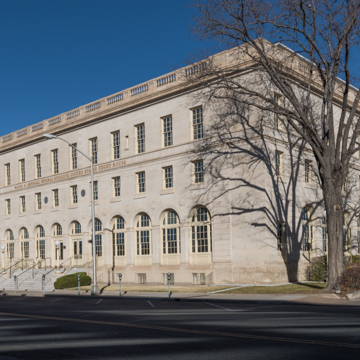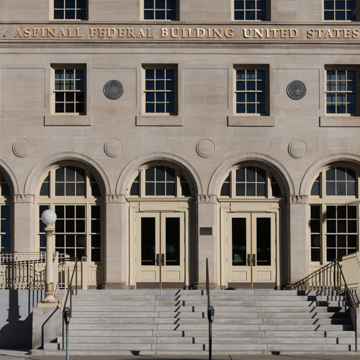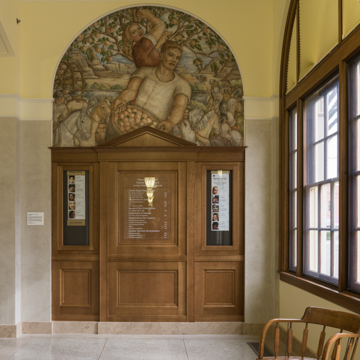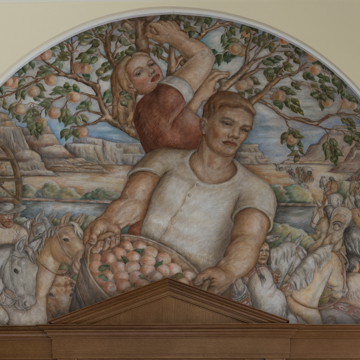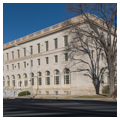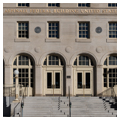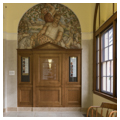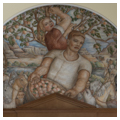You are here
Wayne N. Aspinall Federal Building (Post Office)
The post office moved to a Modernist edifice across the street in 1965, leaving various other federal agencies in this Beaux-Arts monument named for western Colorado's long-time U.S. representative. The three-story limestone building has an arcaded first floor with round-topped openings and tripartite, square-paned windows. The five arched bays on the east were added in a look-alike 1939 expansion. The cornice is topped by a balustraded parapet. Side elevations echo the main facade in general design, and a rear setback above the first floor helps light upper-level offices.
A 6-by-8-foot mural, Harvest (1940), by Denver artist Louise Emerson Ronnebeck, has recently been reinstalled after being lost for seventeen years in a warehouse. One of 1,100 murals commissioned for post offices by the Federal Works Agency's Section of Fine Arts, it depicts Ute Indians departing as white settlers arrive in western Colorado. It is now in the stairwell at the southwest corner of the building.
Writing Credits
If SAH Archipedia has been useful to you, please consider supporting it.
SAH Archipedia tells the story of the United States through its buildings, landscapes, and cities. This freely available resource empowers the public with authoritative knowledge that deepens their understanding and appreciation of the built environment. But the Society of Architectural Historians, which created SAH Archipedia with University of Virginia Press, needs your support to maintain the high-caliber research, writing, photography, cartography, editing, design, and programming that make SAH Archipedia a trusted online resource available to all who value the history of place, heritage tourism, and learning.

